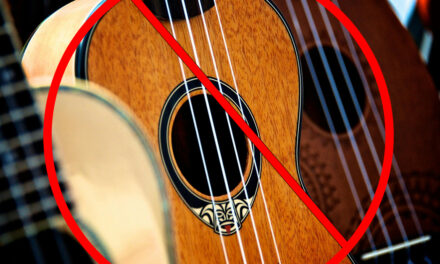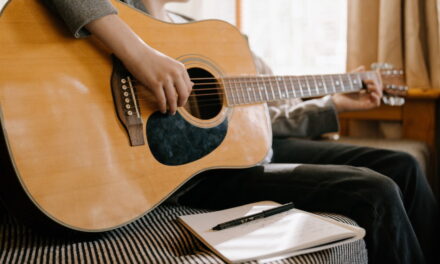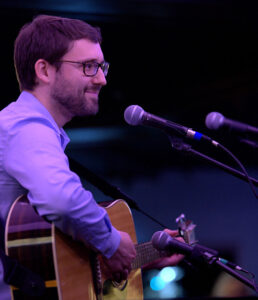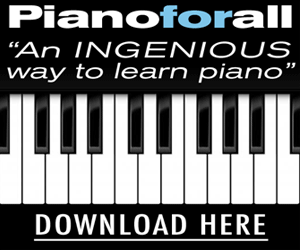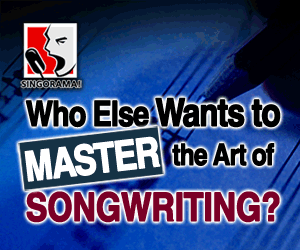Next to sideways baseball caps and pinky rings, there’s just nothing cooler than the humble power chord. It’s incredible what a blast of distortion from two notes can do to the human body – when you hear a few of these kick off a song, the headbanging is sure to follow!
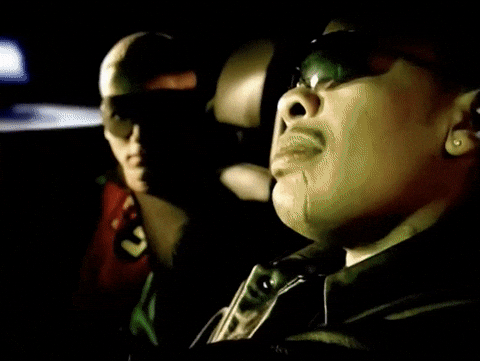
Of course, to achieve this “cool factor” in your own music, you’ll need to learn how to write songs with power chords for yourself!
But the good news is, it doesn’t have to be hard… It just has to be LOUD!
What Are Power Chords?
Okay, real quick…
Before we talk about writing songs with power chords, it might help to define a power chord first. (If you already know the theory behind power chords, feel free to skip ahead to the next section. Don’t worry, I won’t tell!)
A power chord is built off of just two notes: the root and the fifth. In lead sheets, a power chord is usually shown as the root note with the number 5 next to it: for a C chord, that would be a C5.
And what do power chords sound like?
Well, if major chords are “happy” and minor chords are “sad,” power chords are sort of like neutral chords that haven’t made up their minds yet. The third note in a chord determines whether it is major or minor – but power chords don’t even HAVE a third!
With this important tone missing from the chord, you’re left with a sound that’s harder to pin down. Let’s just say it’s a great way to get people’s attention!
Power chords are a mainstay in most popular music genres today, including:
- Pop
- Rock
- Metal
- Country
- Blues
- Punk
These special chords can be produced on an instrument or electronically, so don’t be surprised if also they crop up in genres like EDM, techno, or trap.
You only need two notes for a power chord, but on instruments like piano or guitar, it’s common to double up on the root note by adding the octave too.
1 5 8
C G C
You can include the 8 or leave it out – either way, you’re still playing a power chord!
Improve your songwriting by mastering piano.
$49
ONLY
Writing Power Chord Progressions
Now that we’ve reviewed what a power chord is, let’s talk about how to write songs with them!
First of all, if you already know how to write simple chord progressions using major and minor chords, then congratulations – you can write songs with power chords too! It’s basically the same process.
Here’s a simple example of a chord progression in the key of A major:
I / vi / IV / V
A major / F# minor / D major / E major
This simple doo-wop (1950’s) chord progression starts on the I, goes to the vi, moves down to the IV, and then goes back up to the V. It’s not complicated stuff.
On guitar, you could easily strum this progression using open chords, or play the same thing with barre chords, and you’d already have a nice start to a brand-new campfire song that will undoubtedly make the ladies (or gents) swoon.
But if you strip it down to just the 1 and the 5 in each chord, you get this power chord progression:
A5 / F#5 / D5 / E5
Notice that the root notes are the same, but the song’s whole tone sounds totally different without the third in those chords.
TIP: If you play guitar, you may have noticed that the power chord IS a barre chord, just leaving out the top three or four strings.)
You can also shift into Drop D tuning on guitar for easier power chords, playing two or three notes on the bottom strings, all on the same fret.
Some Common Power Chord Progressions for Inspiration
Writing your own songs with power chords doesn’t have to mean reinventing the wheel or memorizing a ton of crazy music theory.
Trust me, anything you can think of has probably been done before. But no one will put everything together in a song exactly the way you will. That’s the magic of songwriting!
So, here are a few common chord progressions you can use as a starting point for your new power chord song.
I – IV – V (The Ramones, Classic Punk)
This is a great starting point for a rock or punk song. It’s great on guitar, because in standard tuning, you can use your power chord fingering on any note on the E string, then move up to the A string on the same fret, and then move down the neck a full step to finish the progression. Voila, a song!
In the key of A, that would be A major (on fret 5), followed by D major (on the fifth string on fret 5), and then to E major (on fret 7).
Example: To hear this chord progression in action, check out the classic punk song Blitzkrieg Bop by the Ramones. It’s literally just I – IV – V (or A5, D5, and E5) for probably 75% of the song, including the intro and the verses… And it’s great!
I – V – IV (Jimmy Eat World, Emo Rock)
Another great chord progression is with the same three chords, just in a slightly different order. Remember that both the IV and V chords resolve nicely on the I chord, so you can use these chords in virtually any order, and it’ll sound good – as long as you have a melody that matches!
Example: To hear this chord progression in action, check out the emo rock song The Middle by Jimmy Eat World. It’s in the key of D, and it’s mostly pulsing 8th notes on guitar following the I – V – IV progression before going back to I (D5 – A5 – G5 – D5). It’s a fun song to listen to, featuring a pleasant melody, and relies on just three simple power chords.
I – V – vi – IV (Green Day, Pop Punk)
If we add just one more chord to our songwriting process, we can see how much more versatile the progression can be. In this case, we’ve added the vi chord (which is usually minor). In the case of power chords, this chord doesn’t automatically have a minor sound, but don’t forget that a lot of songs will layer in other notes from the bass guitar, vocals, and other instruments – so if you want to have that minor edge, you can get it even while sticking with all power chords on guitar.
Example: To hear this chord progression in action, check out the punk song When I Come Around by Green Day. It’s in the key of G, with another fairly standard set of chords. This time, it’s I – V – vi – IV (G5 – D5 – E5 – C5) for pretty much the whole song, except for a quick chorus that includes the Am (the ii chord).
I always thought the chords themselves were a solid instrumental guitar hook, and it’s a fun example of a punk song. This guitar progression has a unique rhythm, and the song’s arrangement includes a hyperactive bassline under these simple chords!
I – IV – vi – V (Boston, Classic Rock)
Just like how we swapped around a few chords between the I – IV – V and the I – V- IV progressions, we can do the same thing from the previous example to get one that ends on the dominant (V) chord before resolving to the I. It’s also worth noting that you don’t have to stick with the same order of chords the whole time – in this example, the verse has some different chords than the chorus.
Example: To hear this chord progression in action, check out this iconic classic rock song: More Than a Feeling by Boston. With I – IV – vi – V in the key of G, you get a chorus part of G5 – C5 – E5 – D5. This is a multi-layered song that includes an acoustic guitar arpeggiated pattern in the verse, then gets rocking with electric guitar power chords in the chorus.
It just goes to show how much variation you can learn to create in your songwriting with elements like chord choice, rhythm, instrumentation, and dynamics!
I (x4) – IV (x2) – I (x2) – V (x1) – IV (x1) – I (x2) (Elvis, Blues)
We can’t talk about power chords without touching on the 12-bar blues chord progression! There’s a lot of different variations, so feel free to experiment – but the main idea is cycling between the I chord and the IV chord before briefly hitting the V chord and resolving back to the I chord.
For example, in the key of E, you would play E for 4 bars, A for 2 bars, E for 2 bars, B for 1 bar, A for 1 bar, and then finish on E for 2 bars. An alternate way to go is to end the progression on the V chord (B in the key of E).
Another important feature of this pattern is the mini riff that alternates between the 5 and the 6 during each bar, and incorporating a shuffle rhythm. Many blues songs also use some 7th chords instead of straight power chords. (Learn more about how and when to use 7th chords.)
Example: To hear this chord progression in action, check out the classic blues song Hound Dog by Elvis. In the key of C, you get 4 bars of C, 2 bars of F, 2 bars of C, 1 bar of G, 1 bar of F, and 2 bars of C. There’s a lot of room to do your own thing in the blues genre – but it almost always starts with the trusty power chord.
A Power Chord Songwriting Exercise
Now that we’ve seen some examples of songs with power chords, are you ready to try making your own?
If I wanted to write a brand-new song with power chords, there are a few ways I could approach it:
1) Listen to some of my favorite songs in the same genre for inspiration. (There’s nothing wrong with making a song that sounds like something people already love!)
2) Mess around with some chords on guitar, piano, or the piano roll in my DAW to come up with some sounds that I’m happy with.
3) Take an existing song that has full chords and strip these down to just power chords, then come up with my own melody to go with them.
These techniques should help you get started. Just don’t forget, power chords are only the beginning! You can also experiment with interesting riffs to go over the top of them (based on the pentatonic scale).
That’s diving more into writing lead parts instead of rhythm, but it’s important to remember that all of these elements build on each other. Some of the most memorable songs in history owe everything to iconic riffs played over fairly standard power chords!
How to Write Songs With Power Chords Wrap-up
I hope this has given you the tools you need to make some incredible songs with power chords! Now, it’s time for the most important piece of advice: Just get started!
There are so many good ideas out there – and the sooner you start, the more of them you’ll be able to capture in your songwriting. For those who are about to rock, I salute you!
Want to learn more about songwriting with power chords? I highly recommend brushing up on your piano skills – this is the primary instrument I use when it’s time to sit down and write something new. Piano for All does a great job of teaching you different styles and genres!
Improve your songwriting by mastering piano.
$49
ONLY
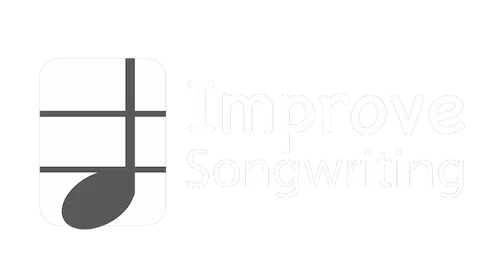
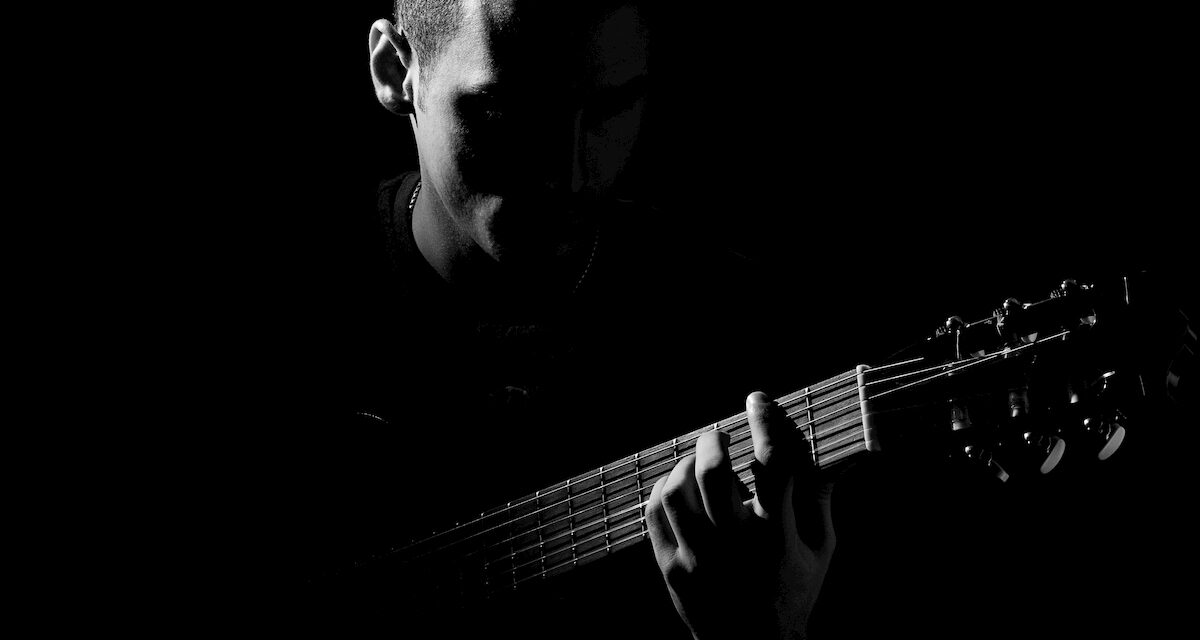

![How Long Should a Song Be? [Radio, Streaming, and Social!]](https://improvesongwriting.com/wp-content/uploads/2023/05/How-Long-Should-a-Song-Be-440x264.jpg)
